 Bat Maternity Season is Over! Now’s the Time for Removal and Exclusion!
Bat Maternity Season is Over! Now’s the Time for Removal and Exclusion!
Bat Maternity Season is Over! Now’s the Time for Removal and Exclusion!
Bat maternity season is when bats are giving birth and raising their flightless pups, and the end of bat maternity season is marked by the pups learning how to fly and leaving the nest. Removing bats during the maternity season will often lead to deaths of the pups, which is why bat removal is illegal during this time. However, it is also illegal to remove bats during their hibernation season, as this can also kill them. Late Summer and Early Fall is the perfect sweet spot to remove bat problems, as it’s right between the end of maternity season and the beginning of hibernation season. Westchester Wildlife can help, we can safely remove and exclude bats from your property in Westchester, Putnam, and Dutchess Counties.
What is Bat Maternity Season?
Bat Maternity Season is defined as late spring through early summer. Typically, bat maternity season will start in the middle of April, when pregnant female bats begin roosting together and preparing to give birth. When the bats are born, they are flightless and rely totally on their mother. Throughout the summer, the baby bats will get stronger and more capable, and the maternity season ends when the baby bats are able to fly on their own. This is usually around mid-to-late August, and by the time September rolls around, bats can be safely removed from your attic space in Westchester.
Why Bat Removal Must Wait Until After Maternity Season
Bats cannot be removed during the maternity season, as it runs the risk of orphaning the pups or trapping the pups inside your walls where they will most likely die. Bats and their pups are under federal protection, due to their ecological importance and their endangered status. Bats are crucial for pollination and seed dispersal of our most precious crops, and they are also fantastic pest control agents, eating up to thousands of mosquitos per night. Unfortunately, their habitat is shrinking due to deforestation, and their population is in danger due to the onset of white nose syndrome, a fungal disease that can take out entire cave’s worth of bats. Protecting healthy bat populations is important, which is why it is highly illegal to remove bats during their maternity or hibernation season.
Why Right Now Is the Best Time for Bat Removal
September is the perfect time for bat removal, as both adult bats and their pups are able to fly, making safe exclusion possible. As September arrives, the colder weather of fall is not far behind, and this cold weather will make bats seek out places to hibernate for the winter. Removing the bats from your attic and sealing up all the entry points can ensure that you aren’t hosting a colony of hibernating bats all winter.
Signs You May Have Bats in Your Attic
Bats are nocturnal, and will be most active at dusk and dawn when they are entering and exiting your attic space. During these times of day you might hear high-pitched squeaks or fluttering and flapping noises coming from your attic space. You might spot guano piles in your attic insulation, or staining/grease marks around rooflines and vents. Bat guano and urine can leave a strong, foul ammonia-like smell coming from your attic space.
How Professionals Remove Bats Safely
Westchester Wildlife is your number one team of bat removal and exclusion professionals in the Westchester area. Company owner Jim Driesacker invented the Batcone and Pro-cone, which are industry tested humane bat removal and exclusion products for both residential and commercial use. These products are placed on the main entry point used by bats, and it allows the bats to exit the attic space, but not get back inside. The bats will move on and find a new home, with no harm done. After the entire bat colony is removed, our team will seal up the main entry point, excluding the bats and ensuring that they can’t get back inside.
Preventing Future Bat Infestations
The best way to prevent future bat infestations is to have bat experts like Westchester Wildlife install chimney caps and vent covers, and to seal roofline gaps. Having regular roof inspections done can also keep a lid on the situation, as we can seal up any gaps before they become a potential problem. Regular seasonal checkups before the blackout periods of maternity season and hibernation season can give you peace of mind that you don’t have a bat colony roosting inside your home.
Best Bat Removal in Westchester County
Now is the perfect time for safe, effective bat removal services in Westchester County. Maternity season has ended, and the pups are now able to fly, but we also haven’t quite hit the cooler temperatures that mark the beginning of hibernation season. Westchester Wildlife are your number one bat experts in the Westchester County area. We can safely and humanely remove and exclude bats from your attic space, ensuring that they are not harmed. Contact us today to get started with a FREE estimate at (800) 273-6673!
 Skunks Under the Deck? Here’s What to Do (and What Not to Do)
Skunks Under the Deck? Here’s What to Do (and What Not to Do)
Skunks Under the Deck? Here’s What to Do (and What Not to Do)
Imagine it’s a nice summer night, you go out to enjoy your deck, only to be hit with the overwhelming smell of skunk. It’s more common than you might think! Skunks will nest underneath decks, sheds, and porches in the suburban areas of Westchester County, and when they decide to settle down in your yard, they will spray around your property to mark their territory. This blog will cover what attracts skunks, the common signs, what to do if you notice a skunk problem, and how professionals like Westchester Wildlife can solve your skunk problem safely and carefully.
Why Skunks Choose Decks and Sheds in Westchester
Skunks are nocturnal, reclusive critters that are drawn to dark, warm areas, preferably close to the ground, where they can dig out their dens. Underneath your deck, shed, or porch therefore provides the perfect habitat for skunks. If your yard is littered with dead leaves and wood piles, this can provide skunks with extra cover, as well as attract insects for skunks to eat. Unsealed crawl spaces can also let skunks inside, providing another source of shelter. If you leave bowls of pet food out, these can also attract skunks to your property. Much of the Westchester suburbs are close to the edge of forests, which can make it a hotspot of wildlife activity.
Signs There’s a Skunk on Your Property
- Skunk spray odor: often in the yard or underneath the home
- Visible burrows or disturbed soil around deck or shed: skunks dig underground to nest and find grubs to eat
- Nocturnal rustling sounds: skunks are more active at night, so you might hear them moving around under your house
- Pet agitation or recent outdoor skunk encounter: if your dog is acting upset or comes in smelling like skunk, they most likely found the den in your yard.
What NOT to Do if You Suspect a Skunk
Don’t try to block the den entrance, as you might accidentally trap a mother skunk inside with her babies. The only thing that smells worse than a skunk spray is a dead skunk. Don’t attempt to scare the skunk out, as they can spray when frightened, and may lash out with claws and teeth. Don’t use poison or repellents, as they are inhumane, ineffective, and often illegal. The number one thing you should NOT do if you have a skunk problem is ignore it, as the problem can get worse if left unaddressed.
What You SHOULD Do Instead
Instead of trying to remove the critter under your deck, you should observe from a distance, noting the time of activity and where the entry points are. Then, call a professional like Westchester Wildlife for safe, humane skunk trapping and removal services. Our first step will be scheduling an inspection, so we can determine if the skunk has babies and how to proceed. Next we remove the skunks, perform exclusion work, and repair any damage done, ensuring they don’t come back.
Preventing Future Skunk Problems
The best way to prevent future skunk problems is to call Westchester Wildlife for professional exclusion services. We will bury hardware cloth around decks and sheds to prevent skunks from digging underneath them. You can also secure trash cans, compost piles, and bowls of pet food to limit their food sources, and remove yard debris and wood piles to limit their shelter.
Why Choose Westchester Wildlife
Westchester Wildlife is the best skunk trapping and removal company in the Westchester County area. Our team has years of experience removing skunks from homes in Westchester, so you can count on us getting the job done right. All our wildlife removal practices are safe and humane, ensuring a safe environment for your home without harming the animal in any way. Our services go beyond removal, we also offer cleanup and exclusion services to get your home back in shape and protect it from more wildlife problems in the future. Contact us today to get started with a FREE estimate at 800-273-6673!
 Wild Neighbors: How Raccoons Thrive in Westchester’s Suburbs
Wild Neighbors: How Raccoons Thrive in Westchester’s Suburbs
Wild Neighbors: How Raccoons Thrive in Westchester’s Suburbs
Raccoons are one of the most common wildlife species that you might encounter in the suburbs of Westchester County. These intelligent, nocturnal critters are known to raid trash cans for food, nest inside your attic space, spread diseases, and leave waste behind everywhere. Raccoons are very adaptable, and the conditions of the suburbs are optimal for their survival. Understanding how and why raccoons are thriving in Westchester can help you understand how to keep them out. And if a raccoon has already made its way inside your attic space, you can call Westchester Wildlife for safe and humane trapping and removal services.
Why Raccoons Love the Westchester Area
Raccoons love Westchester because of the abundant sources of food. Raccoons are omnivores that eat whatever they can get their paws on, but many man-made structures in the suburbs provide easier ways for a raccoon to score a quick meal. Trash cans, compost piles, gardens, birdfeeders, bowls of pet food left outside; all of these can feed a hungry raccoon. In addition to an abundance of food, raccoons in Westchester also have plenty of places to seek shelter, like inside attics, crawl spaces, and chimneys. If that weren’t enough, the suburbs also provide refuge from the raccoon’s natural predators, like coyotes, bobcats, and cougars.
Common Signs of a Raccoon Problem
Loud stomping and shuffling sounds coming from inside your attic space or walls, especially at night, are a common sign of a raccoon problem. If you notice torn shingles, soffits, or siding, this can mean raccoons have ripped their way into your home. If your outdoor trash cans or outdoor pet food bowls are tipped over and raided every night, a raccoon is probably living on your property. Raccoon droppings around your yard or attic space are a common sign as well, but use caution when cleaning it up (or wait for professionals), because raccoon droppings can spread raccoon roundworm.
Raccoon Behavior in Westchester
Raccoons commonly nest inside your attic space, ripping through shingles, soffits, and siding to get inside. Once inside, raccoons will rip apart your insulation to add to their nests, often digging latrines within the insulation to deposit their waste. Raccoons will also chew through wires and tear through HVAC ducts. It’s not recommended that you try to remove raccoons yourself, as they might become aggressive when cornered (especially if accompanied by their young) and may lash out with their sharp claws and teeth. Not only can they seriously injure you, raccoon bites and scratches can also oftentimes spread the rabies virus.
How Westchester Wildlife Handles Raccoon Removal
Our first step when removing raccoons is to conduct a thorough inspection of your property, looking for raccoon nests inside attics and crawl spaces. We also check for entry points on roof vents, soffits, chimneys, and more. Then, we begin safely and humanely trapping and removing the raccoons, ensuring that we remove the mothers with their young. After the raccoons are gone, we perform exclusion work to make sure that they don’t come back, and then clean up any mess left behind.
Preventing Future Raccoon Intrusions
Westchester Wildlife can remove raccoons from your property, and once they are gone, we will perform exclusion work to keep them out for good. Exclusion work is the process of locating and sealing off entry points like soffit holes, missing shingles, and missing siding. Exclusion work can also include installing vent guards and wildlife barriers, as well as performing crawl space repairs. Even if you don’t currently have a raccoon infestation, our team can perform exclusion work to ensure that your home doesn’t become a target.
In addition to exclusion work, you can take some additional steps to make your property less inviting to raccoons. Secure trash cans with a tightly-fitting lid and bring in bowls of pet food before bed every night. Trim tree branches that are too close to your home, as they can make it easier for raccoons to get on your roof. Removing food and water sources from your yard will go a long way in making your home less habitable to nuisance wildlife.
When To Call A Professional
When DIY methods of prevention fail, and a raccoon has gotten inside your attic space or wall voids, it’s time to call a professional. Raccoons are unpredictable wild animals with sharp claws and teeth, so always leave raccoon removal to the experts. Westchester Wildlife can help, we offer the best raccoon trapping, removal, and exclusion services Get in touch with our team today to get started with a FREE estimate at (800) 273-6673!
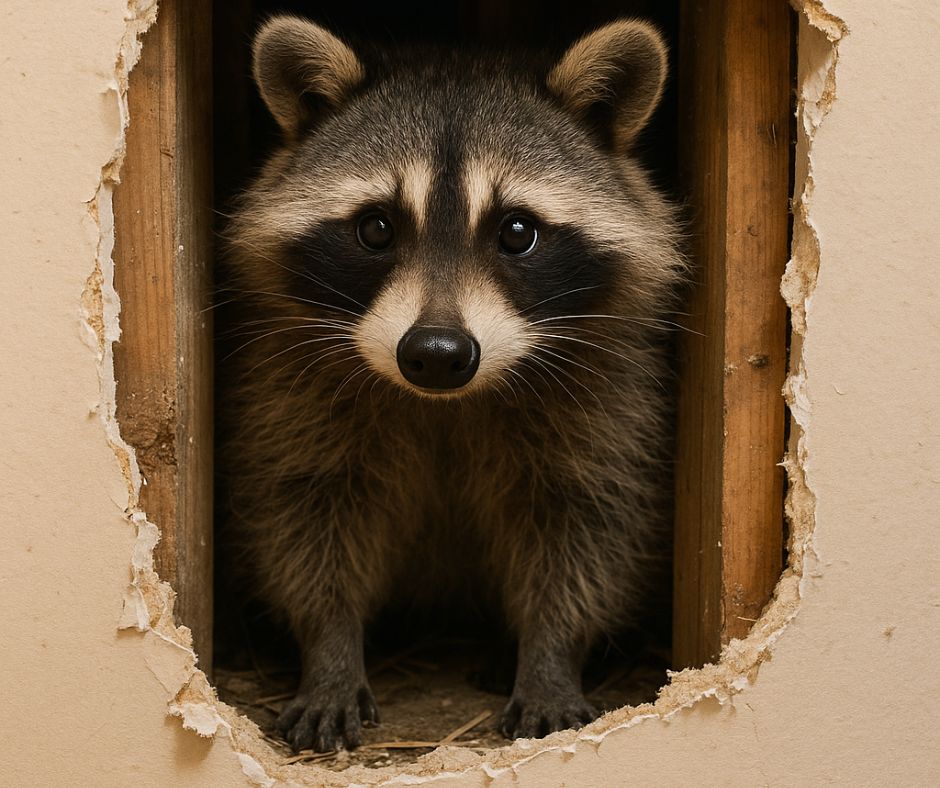 What Does It Mean When You Hear Noises in the Walls at Night?
What Does It Mean When You Hear Noises in the Walls at Night?
What Does It Mean When You Hear Noises in the Walls at Night?
Nothing’s more unsettling than hearing something moving around inside your home’s walls or attic space at night. You might hear scratching or scurrying, or maybe loud stomping and shuffling. Don’t worry, it’s probably not a ghost! Just a nuisance critter that may be ripping up your insulation! Thankfully, you can quickly identify what type of animal is in your attic by listening carefully for the noise, and then get rid of it by contacting Westchester Wildlife for safe, humane trapping and removal services in the Westchester area.
Scratching, Scurrying, or Pattering Sounds
If you are hearing scratching sounds, scurrying sounds, or faint pattering sounds coming from inside your walls or crawl space, you most likely have mice, rats, or squirrels. Squirrels are diurnal, so you are more likely to hear them during the day, while rats and mice are more active after dusk or before dawn. These sounds usually indicate that a squirrel is settling down and building a nest, often ripping out your insulation in the process. It could also indicate that rats or mice have gotten inside your house. It’s important to call a wildlife company like Westchester Wildlife as soon as you notice these noises, as rat and mice populations can explode into massive infestations seemingly overnight. Even worse, rats, mice and squirrels can chew on the rubber covering surrounding wires, which can create a potential fire hazard.
Thumping or Slow Movement
If you are hearing thumping, slow moving, or shuffling, especially at night, you might have a raccoon moving around your attic space. Mother raccoons often break into attic spaces to have babies, as your attic is safe, warm, and secluded. However, raccoons will rip up your insulation to make their nests, often digging latrines in the insulation to deposit their waste in. Raccoons can also tear through HVAC ducts and spread raccoon roundworm. Always leave raccoon removal to the professionals, as these fierce animals can lash out with their sharp claws and teeth when cornered, and may transmit the rabies virus.
High-Pitched Chirping or Squeaking
If you’re being annoyed all night by incessant high-pitched chirping or squeaking noises coming from behind walls, inside attic vents, or near chimneys, you might be hearing bats or baby squirrels. Bats are known to squeak, and unfortunately, bats don’t come alone, as they often nest in large groups, roosting and depositing their guano into your insulation. Squirrels will use your attic as a place to give birth and nurse their young, so high pitched squeaking can also be an indicator of a squirrel nest. No matter if its bats or squirrels, these sounds are an indicator that its time to call a professional.
Gnawing or Chewing
If you are hearing gnawing or chewing sounds coming from inside your walls or attic space, you most likely have rodents like rats, mice, or squirrels. These critters will gnaw at the tiniest gaps and openings to get inside your home, so you might hear them chewing around gaps in your roofline or foundation to get inside the home. Rodents have teeth that never stop growing, and in order to keep the length of their teeth manageable, they will gnaw on baseboards, drywall, cabinet doors, and any other hard surface they can find in your home.
Fluttering or Light Scratching
If you hear fluttering or light scratching sounds coming from inside your walls or vents, you might have birds or bats trapped inside your walls. You don’t want these critters dying in your walls, as they will quickly begin decomposing, creating an awful smell in your home.
What NOT To Do
If you hear animals coming from your walls or attic space, it’s important to NOT seal up the entry points before removing them, as you might trap the critter within the home. Removing wildlife yourself isn’t advisable, as wild animals are unpredictable and can bite or scratch when confronted. Avoid using poisons, as they can just lead to dead animals stuck in your walls or attic, and poisoning some animals like bats is highly illegal. And definitely DON’T just assume that the animal will go away on its own!
What You SHOULD Do
What you SHOULD do when hearing strange sounds in your walls or attic at night is contact a professional wildlife removal service like Westchester Wildlife. Additionally, listening closely to the animal sounds to identify patterns like the time of day, type of sound, and the frequency can help you identify the animal sooner.
How Westchester Wildlife Can Help
If you have nuisance animals inside your crawl space, contact the experts at Westchester Wildlife. Our team of experts will conduct a thorough inspection of your property to locate the animals and where they are getting in. Next, we will safely trap and remove all the nuisance critters from your property. Finally, we will repair any damage done by the animals and seal off their entry points, fully excluding them from your home. Contact our team today to get started at (800) 273-6673!
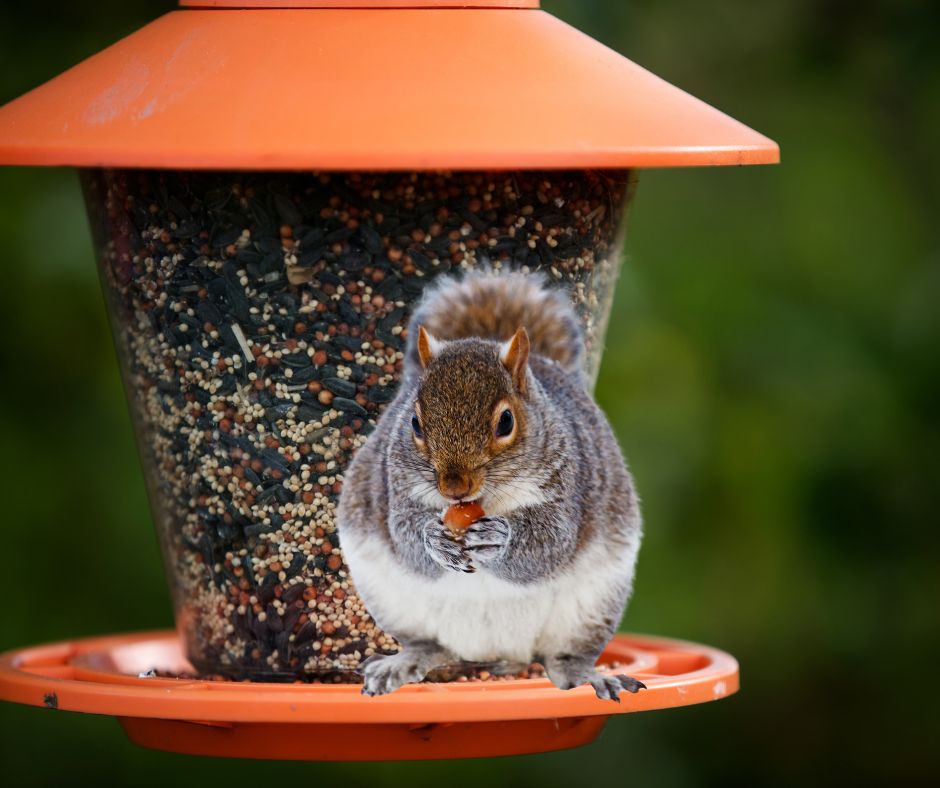 Top 5 Backyard Features That Attract Wildlife
Top 5 Backyard Features That Attract Wildlife
Top 5 Backyard Features That Attract Wildlife
Are you dealing with nuisance critters like raccoons, squirrels, birds, and more causing issues on your property in Westchester? Your backyard may be attracting them without you even realizing it. It’s important to locate the sources of food, water and shelter that are attracting critters to your backyard so you can take the proper preventative steps to protect your home. In addition, Westchester Wildlife also offers wildlife trapping and removal services to remove animals that have already set up shop on your property.
1. Bird Feeders
Bird feeders are an obvious one, as these containers full of nuts and seeds provide an easy meal for both birds and squirrels. While bird feeders don’t guarantee that a squirrel will break into your attic or a bird will nest inside your dryer vent, a steady food source certainly makes your home more appealing as a long-term home.
2. Compost Piles and Open Trash Bins
Discarded food attracts all kinds of wildlife, especially raccoons, so it’s important to secure your food trash to prevent wildlife problems. Compost piles are a great way to return organic waste to the earth and fertilize your plants, but they also provide a veritable buffet for a hungry raccoon. Instead, secure your compost in a raccoon-proof compost bin.
If your outdoor trash cans are left open or unsealed, you might wake up to trash strewn all over your lawn by a raiding raccoon. Keeping your trash cans sealed with a tightly-fitting lid, especially overnight, can help prevent raccoons from getting into your trash and viewing your property as a source of food.
3. Pet Food Left Outdoors
If you leave bowls of dog food out on your back deck for your furry friend, or if you leave out cat food for the neighborhood stray, you might be unknowingly providing a meal for a raccoon, skunk, rat, or other passing critter. Make sure you bring all pet food inside before nighttime to prevent nocturnal critters from setting their sights on your property.
4. Overgrown Vegetation and Brush Piles
If your backyard is covered in dense, overgrown vegetation and tall grass, it provides plenty of places for groundhogs, snakes, rats, shrews, and more to shelter and nest. Animals feel safer with some level of cover, so trimming bushes, clearing brush piles, and keeping your grass cut short (especially near your home’s foundation) can make your backyard feel less safe for passing animals.
5. Sheds, Crawl Spaces, and Woodpiles
Sheds, unsealed crawl spaces, and wood piles in your backyard provide a dry, hidden nesting or denning site for skunks, opossums, chipmunks, rats, and snakes. Having Westchester Wildlife install wildlife barriers underneath your sheds and around your home’s foundation can keep these critters out.
Honorable Mention: Backyard Water Sources
Sources of water in your backyard can also attract passing wildlife like raccoons, deer, squirrels, and more. Birdbaths and ponds are common sources of water near homes, but even clogged gutters with rain collected in them can provide water to a thirsty squirrel. Ensuring you carefully maintain water fixtures on your home and regularly drain standing water can help keep these critters out.
When It’s Time To Call A Professional
It’s time to call a professional about a wildlife problem as soon as you notice the signs: persistent scratching, scampering, stomping, or flapping noises, visible droppings, tracks, chewed wires, and less effective insulation (due to wildlife nesting). If you need wildlife trapped, removed, or excluded from your property in Westchester, Putnam, Dutchess, or Fairfield, call the experts at Westchester Wildlife today for a FREE estimate at 800-273-6673!
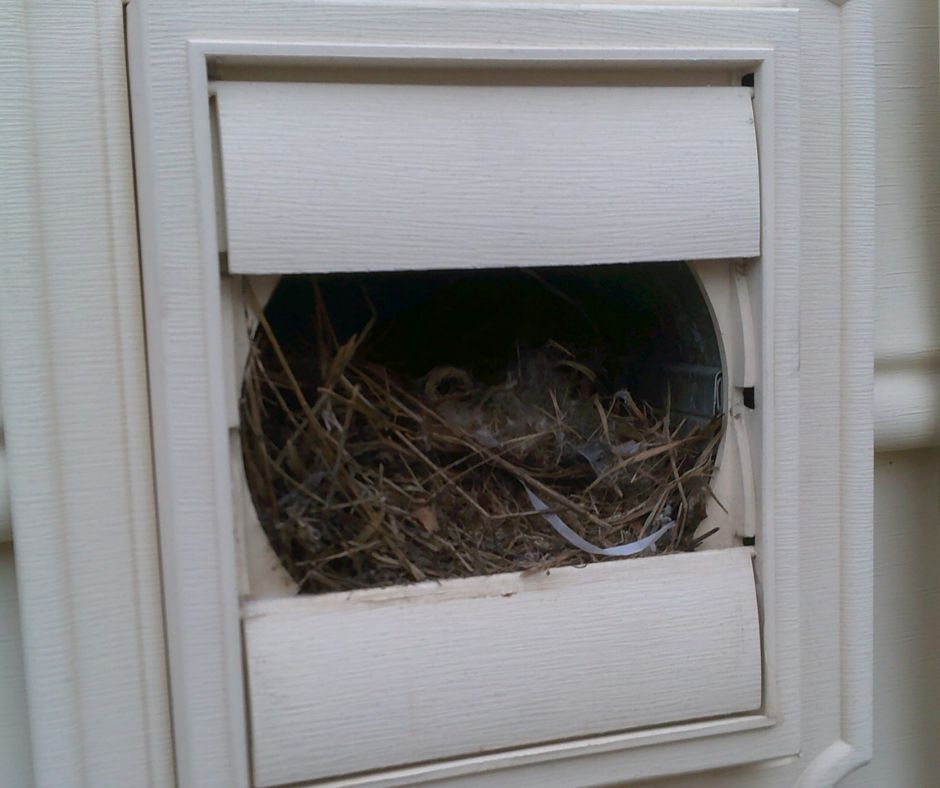 Top 5 Entry Points Wildlife Use to Invade Homes
Top 5 Entry Points Wildlife Use to Invade Homes
Top 5 Entry Points Wildlife Use to Invade Homes
Your home provides a perfect sanctuary for wildlife, as it is warm and safe, protected from predators and harsh weather. These conditions also make your home perfect for animals to have their babies in. Some of the most common nuisance critters you might have nesting inside your home in Westchester County include raccoons, squirrels, bats, birds, groundhogs, skunks, snakes, and more! Give us a call to get scheduled at (800) 273-6673!
Number One: Roof Vents and Soffits
Roof vents or soffits provide easy access for squirrels and raccoons to get inside your attic space. Ridge vents and gable vents can also let in bats, who can fit their bodies through very small gaps. Raccoons and squirrels can enter through these vents as well, but they will typically gnaw and scratch at the vents until they have openings wide enough to fit through. Raccoons and squirrels will similarly gnaw and scratch at gaps and cracks in your soffit until they can fit themselves into your attic space.
Number Two: Chimneys
Some of the common chimney invaders include raccoons, birds, and squirrels. These animals can create dangerous conditions by clogging up your chimney with their flammable nesting material. Chimneys can also be used to directly access the living space in some cases. Having a chimney cap installed can keep critters out of your chimney while allowing the chimney to function as normal.
Number Three: Gaps Under Roof Eaves or Fascia Boards
Gaps underneath roof eaves or fascia boards can be exploited by squirrels, bats and birds to get inside your attic. Squirrels will often chew at these gaps to widen them, which can leave it open to be widened further by raccoons. Using metal flashing and sealing these gaps with wildlife-grade materials can keep them out in the future.
Number Four: Crawl Space Vents and Foundation Gaps
If your crawl space vents are unsealed, they can let in skunks who will use your crawl space as a denning site. Skunks tend to dig out their dens which can damage your foundation, and they will spray around their denning site. The awful smell of the skunk spray can then drift upwards into the home. If you have gaps in your foundation, this can let in rats who will breed very quickly, and then snakes aren’t far behind, as they will go where the food is.
Number Five: Gaps Around Pipes, Cables, and Utility Lines
The penetrations where pipes, cables, and utility lines pass into the house can have small gaps around them, which is where smaller wildlife like mice and rats can enter the home. Snakes can also fit through these tiny gaps, entering your home in search of rodents to eat.
Honorable Mention: Garage Doors
If your garage door isn’t fully touching the ground, critters like raccoons can squeeze their bodies underneath the door to enter your garage, especially if your garage contains trash cans they can raid for food.
Why Professional Exclusion Matters
If you have wildlife causing problems on your property in Westchester, it’s important to not just seal off the entry points and call it a day, as you might trap nuisance wildlife inside your home. Instead, contact the experts at Westchester Wildlife for wildlife trapping, removal, and exclusion. Our technicians start off by thoroughly inspecting your home for wildlife, making sure to note the current and potential entry points. Next, we safely and humanely trap and remove all critters from your property, always ensuring the babies are removed with their mother. Finally, we perform exclusion work on all the entry points, ensuring that the animals can’t get back inside your home. Give our team a call to get started today with a FREE estimate at (800) 273-6673!
 Bats in the Attic? Why DIY Bat Removal Can Backfire
Bats in the Attic? Why DIY Bat Removal Can Backfire
Bats in the Attic? Why DIY Bat Removal Can Backfire
It happens more often than you think: you might notice squeaking or flapping sounds coming from your attic space, or you might spot large piles of bat droppings inside your attic insulation. These are the common indicators of bats nesting inside your attic space. Many might have the impulse to try and deal with a bat problem themselves, but this isn’t recommended. Not only can DIY bat removal be ineffective and dangerous, it might also be illegal. Don’t worry, Westchester Wildlife can help. Our team of experts offer safe, humane bat removal services in the Westchester, NY area, in accordance with federal and state guidelines. Get in touch with our team today to get started at (800) 273-6673!
Understanding Bat Behavior in the Home
Attic spaces are particularly attractive to bats because they provide the perfect environment for roosting. Similar to the caves that bats naturally root in, attic spaces are warm, safe, and protected from predators and harsh elements. Some of the common species of bats that may nest inside your attic include the Little Brown Bat and the Big Brown Bat. You may notice a bat problem in your home when you hear flapping, scratching, or squeaking sounds at dusk. Stains around entry points caused by the bat’s greasy fur brushing against the siding can also be spotted. If you enter the attic space and see droppings inside your insulation, then you most likely have a bat problem.
The Role of Maternal Colonies (Why Summer Removal Is Off Limits)
A maternal colony is a group of female bats that roost together to raise pups. Maternal colonies usually get together to raise their pups from the late spring to late summer months of May to August. After the pups are born, it takes them several weeks to learn how to fly, and during this time they are totally reliant on their mothers. Removing bats during this time is prohibited by law, as attempting to remove the colony can kill the babies by trapping them inside the attic space. The mother bats may also re-enter your attic through new entrances to retrieve their pups.
Why Bats Are Federally Protected (And What That Means for You)
Bats are under federal and state protection, and attempting to remove them during maternity season can incur heavy fines. But why are bats protected? Well, there are a few reasons:
To start, bats are crucial to the ecosystem. Not only are they a natural pest control agent (bats can eat thousands of mosquitoes and crop pests nightly), but bats are also prominent pollinators for fruits and seeds that are an important part of our food chain.
Bats are also facing several challenges leading to population decline. A fungal disease called white-nose syndrome has been decimating bat populations, in part to how quickly it can spread among colonies. Natural habitats for bats have also been lost over the years as urban development and deforestation continues. Therefore, federal and state protections and guidelines were implemented to ensure that bats are always handled with care, to ensure the ongoing health and safety of these crucial critters.
The Right Way To Handle A Bat Problem
- Step 1: Professional inspection: contact the experts at Westchester Wildlife for a comprehensive inspection to confirm species, colony size, and access points.
- Step 2: Timing exclusion properly: our experts won’t begin exclusion until after the bat pups can fly, usually around August through October.
- Step 3: Use of one-way exclusion devices, which allow bats to leave the attic, but not get back inside.
- Step 4: sealing all entry points after exclusion is confirmed successful
- Step 5: guano cleanup to prevent the risk of histoplasmosis transmission
Why DIY Bat Removal Often Fails
DIY bat removal can often fail, as DIYers may unknowingly seal bats inside the home, or even worse, separate mothers and pups. If a DIYer is inexperienced in checking for entry points, they may misidentify the entry points, which would allow the bats to return or relocate to somewhere else within the structure. Store-bought repellents and strobe lights often don’t work, and might put further stress on the colony. Attempting to remove the bats by hand is NEVER recommended, as bats can bite or scratch, and these critters are a prevalent carrier of the rabies virus.
Trust the Experts at Westchester Wildlife
If you need bat removal in Westchester, contact the experts at Westchester Wildlife today! Our team has years of experience with humanely evicting bats from both residential and commercial properties, in accordance with state and federal laws. Our team ensures safe cleanup services and long-term exclusion success, protecting your home against bat invasions in the future. Contact our team today at (800) 273-6673 to get scheduled for a bat removal inspection in the Westchester area!
 Do Mothballs Really Keep Animals Away?
Do Mothballs Really Keep Animals Away?
Do Mothballs Really Keep Animals Away?
Many homeowners rely on household hacks or false information to deter nuisance wildlife, but does it really work? For example, mothballs are commonly touted as a great way to get rid of raccoons, squirrels, snakes, skunks and other nuisance wildlife that may be causing issues, but there is little scientific evidence that mothballs actually do anything against these critters. Many wildlife repellents available on the market are ineffective, or only effective for a short period of time. The best way to keep animals off your property is to reduce attractants like food sources, seal any potential entry points, and install wildlife barriers around target areas like underneath decks. If you already have wildlife causing problems on your property and you need to get rid of them, contact the experts at Westchester Wildlife today for expert wildlife trapping and removal services at (800) 273-6673!
The Myth of Mothballs
Mothballs are small balls of chemical pesticides that are often used to prevent damage from silverfish, mold, and moth larvae when storing clothes and other fabric materials for long periods of time.
Popular DIY advice and word-of-mouth has led many to believe that the strong odor of mothballs is effective at repelling nuisance wildlife. However, there is little evidence for this. Mothballs may provide a short-term deterrent, but once the critters wisen up, they stop being effective. Mothballs are best used against clothing pests indoors, when they are put outdoors, the dilution caused by weather and the open air can lessen the effect. Mothballs shouldn’t be used outdoors anyways, as they can create health hazards when they contaminate soil and water. Mothballs may also harm non-target wildlife like birds, or pollinators like bees.
Other Common Wildlife Repellent Myths
Besides mothballs, there are a few other common myths about how to repel moths:
- Ammonia-soaked rags: temporary at best, often ignored by raccoons/skunks.
- Ultrasonic devices: inconclusive evidence; some animals adapt quickly
- Predator urine: often ineffective unless refreshed constantly and sourced properly.
- Irish Spring soap, peppermint oil, dryer sheets: mostly anecdotal, rarely backed by data.
What Actually Works?
You might be wondering, “If mothballs, predator urine, and ultrasonic devices aren’t effective, then how DO I keep animals away from my property?” Well, the answer is a combination of exclusion, habitat modification, and professional removal services.
Exclusion is the process of sealing off your home to ensure that critters can’t get inside. Exclusion can include sealing off entry points, installing chimney caps and vent guards, and weatherstripping underneath doors and windows. Crawl space encapsulations and crawl space vent sealing are another form of exclusion.
Habitat modification includes the steps you take to make your property less inviting to wildlife. Sealing trash cans, bringing in pet food at night, trimming vegetation attractive to critters, removing clutter and lawn debris, etc. are all examples of habitat modification.
Professional and humane wildlife removal services including trapping and removal services as well as deterrents can ensure that critters stay away from your property.
Wildlife Exclusion and Deterrents in Westchester
Don’t waste time on mothballs or other ineffective and risky DIY methods to keep raccoons, squirrels, skunks, snakes and more off your property. Instead, contact the experts at Westchester Wildlife for safe, humane wildlife removal, wildlife exclusion, and wildlife deterrents in Westchester at (800) 273-6673!
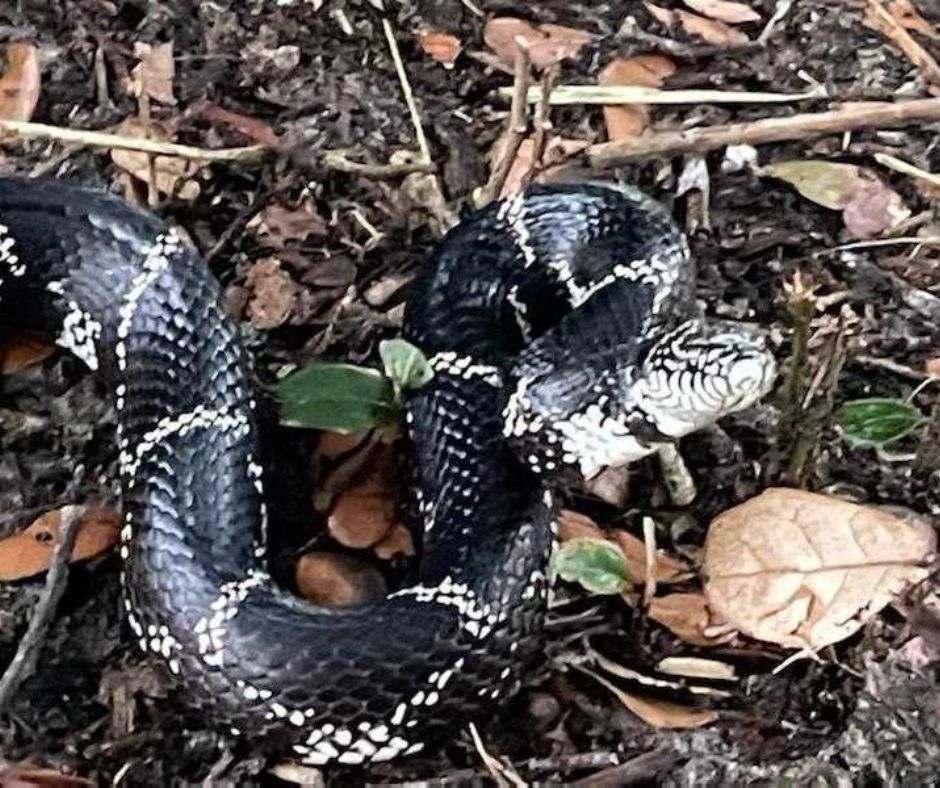 What Attracts Snakes to Homes in Westchester?
What Attracts Snakes to Homes in Westchester?
What Attracts Snakes to Homes in Westchester?
Do you have a problem with snakes inside your crawl space, attic, or garage in Westchester? While most snakes in the area aren’t venomous, that doesn’t mean homeowners are ready to let these reptiles into their homes. But what actually attracts snakes to your property? And how can you get rid of them?
Top Reasons Why Snakes Are Attracted to Residential Areas
- Abundant food sources: residential neighborhoods often have large populations of small rodents that snakes prey on, like mice, rats, and chipmunks. Outdoor bird feeders can also attract these rodents to residential areas.
- Shelter and hiding spots: snakes have plenty of places to hide and rest in residential areas, including wood piles, rock crevices, overgrown gardens, crawl spaces, sheds, garages, and gaps underneath decks or porches.
- Moisture and water: residential areas provide sources of water and moisture like bird baths, ponds, leaky garden hoses, and shady, damp areas in mulch beds.
- Yards with minimal activity: yards without pets, yards that aren’t mowed frequently, and yards with low foot traffic offer an undisturbed area where snakes feel safe.
Why Do Snakes Enter Homes?
Snakes will enter the house when they are searching for prey like mice and rats, which is why a snake inside your home is often an indicator of a larger issue with rodents. Snakes will also get inside crawl spaces during the cooler months, as they are attracted to the heat given off by the foundation.
Snakes can enter homes through cracks in the foundation, gaps underneath the garage door, open vents, or entry points created by other wildlife like raccoons and squirrels.
How to Make Your Property Less Inviting to Snakes
You can make your home less inviting to snakes by taking the proper precautions, including:
- Seal all entry points, including gaps and cracks in the foundation and siding. Install weatherstripping around doors and windows.
- Keep the yard clean by removing dead logs, leaf litter, woodpiles, etc. Trimming grass and shrubs near the home can also keep snakes out.
- Limit accumulation of water with proper drainage systems
- Contact a professional like Westchester Wildlife for rodent control services to limit the snake’s food population.
Snake Removal Services in Westchester
If you are seeing snake skins left around your property, or have seen snakes slithering around your garage or porch, don’t panic! Contact the experts at Westchester Wildlife! Our team of snake experts will safely locate and remove all snakes from your property, seal off all the entry points to prevent them from coming back, and institute a rodent control program to make your home even less attractive to snakes in the future. Contact our team to get started today with a FREE estimate at (800) 273-6673!
 What’s The Difference Between Mice, Moles, Voles, and Shrews?
What’s The Difference Between Mice, Moles, Voles, and Shrews?
What’s The Difference Between Mice, Moles, Voles, and Shrews?
Mice, moles, voles, and shrews are all common small mammals that can become a nuisance for homeowners in the Westchester, NY area. It’s important to be able to tell the difference between these nuisance critters, because each creates a specific type of damage, and each may require different methods of removal.
Mice
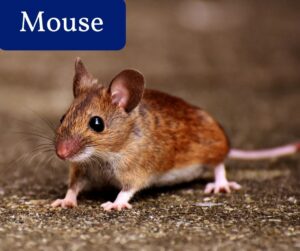 Mice are small rodents with prominent front teeth, long tails, slender bodies, and large ears. Out of all of these animals, mice are the ones that you will find indoors the most often. Mice will raid your kitchen pantry for dry, prepackaged food, tunnel through your attic insulation, and build nests in your basement.
Mice are small rodents with prominent front teeth, long tails, slender bodies, and large ears. Out of all of these animals, mice are the ones that you will find indoors the most often. Mice will raid your kitchen pantry for dry, prepackaged food, tunnel through your attic insulation, and build nests in your basement.
You can often tell if you have a mice infestation by seeing their small droppings around the house, especially in the kitchen, or smelling a strong urine odor. Gnaw marks on food packaging, baseboards and doors are also a sign of mice, as is scratching and running sounds coming from your attic space or inside your walls.
Mice can gnaw through wires and chew on wooden support beams and other structures in your home, so these rodents are most often associated with internal damage to the home, while moles, voles, and shrews are more associated with external damage to the home.
Moles
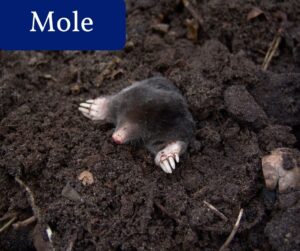 Moles are the most distinctive critter here, with cylindrical bodies, large front paws armed with long, sharp claws for digging, extremely small eyes, and no visible ears. Moles live underground, digging out large tunnels throughout your yard and feeding on earthworms, grubs, and other insects.
Moles are the most distinctive critter here, with cylindrical bodies, large front paws armed with long, sharp claws for digging, extremely small eyes, and no visible ears. Moles live underground, digging out large tunnels throughout your yard and feeding on earthworms, grubs, and other insects.
Moles can kill your lawn by tunneling through the soil underneath, disrupting the soil and destroying the root system of your grass. Moles can do the same inside your garden, killing vegetables as well as flowers and bushes. Unlike mice, you almost never find a mole inside your home. Some common signs of moles on your property include volcano-shaped mounds of dirt near the entrance to their tunnels, and raised ridges in the lawn that correspond to where they are digging underneath.
Voles
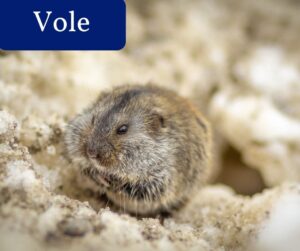 Voles are closely related to mice, often called “meadow mice” or “field mice”, but there are some key differences that set them apart. Voles are chubbier and stockier than mice, as opposed to the slimmer build that mice often have. While mice have long tails and big ears, voles have short tails and small ears. Mice more commonly get inside the house, but voles are commonly yard pests. Voles can live above or below ground, and stay active-year round. Voles are herbivores that feed on grass, roots, and bark. You can tell when you have a vole problem by spotting small surface runways, similar to tiny trenches, dug out through your yard. Spotting chewed bases of your plants and stripped bark can also indicate a vole problem. It’s important not to ignore voles, as they can destroy your garden and damage trees and shrubs.
Voles are closely related to mice, often called “meadow mice” or “field mice”, but there are some key differences that set them apart. Voles are chubbier and stockier than mice, as opposed to the slimmer build that mice often have. While mice have long tails and big ears, voles have short tails and small ears. Mice more commonly get inside the house, but voles are commonly yard pests. Voles can live above or below ground, and stay active-year round. Voles are herbivores that feed on grass, roots, and bark. You can tell when you have a vole problem by spotting small surface runways, similar to tiny trenches, dug out through your yard. Spotting chewed bases of your plants and stripped bark can also indicate a vole problem. It’s important not to ignore voles, as they can destroy your garden and damage trees and shrubs.
Shrews
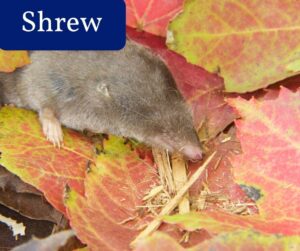 Shrews are similar to mice, but they have smaller eyes and an elongated, pointed snout. Shrews have denser fur, usually of a uniform color, either brown or gray. Shrews are more insectivorous than mice, and they are very aggressive hunters for their size. Much like moles and voles, shrews are rarely seen indoors, however, you might spot them inside garages or sheds. However, they prefer to live in leaf litter, under logs, or near foundations. Shrews are less destructive than mice, moles, or voles, but they can bite or scratch when handled.
Shrews are similar to mice, but they have smaller eyes and an elongated, pointed snout. Shrews have denser fur, usually of a uniform color, either brown or gray. Shrews are more insectivorous than mice, and they are very aggressive hunters for their size. Much like moles and voles, shrews are rarely seen indoors, however, you might spot them inside garages or sheds. However, they prefer to live in leaf litter, under logs, or near foundations. Shrews are less destructive than mice, moles, or voles, but they can bite or scratch when handled.
When To Call A Wildlife Professional
If you have mice, moles, voles, or shrews causing problems on your property in the Westchester area, contact the experts at Westchester Wildlife. Our team can correctly identify the type of critter you are dealing with, and begin working on a treatment plan, and once the animals are gone, we can offer exclusion work and preventative treatments to keep them from returning. Contact our team today to get started with a FREE estimate at (800) 273-6673!
 Bat Maternity Season is Over! Now’s the Time for Removal and Exclusion!
Bat Maternity Season is Over! Now’s the Time for Removal and Exclusion!












 Voles are closely related to mice, often called “meadow mice” or “field mice”, but there are some key differences that set them apart. Voles are chubbier and stockier than mice, as opposed to the slimmer build that mice often have. While mice have long tails and big ears, voles have short tails and small ears. Mice more commonly get inside the house, but voles are commonly yard pests. Voles can live above or below ground, and stay active-year round. Voles are herbivores that feed on grass, roots, and bark. You can tell when you have a vole problem by spotting small surface runways, similar to tiny trenches, dug out through your yard. Spotting chewed bases of your plants and stripped bark can also indicate a vole problem. It’s important not to ignore voles, as they can destroy your garden and damage trees and shrubs.
Voles are closely related to mice, often called “meadow mice” or “field mice”, but there are some key differences that set them apart. Voles are chubbier and stockier than mice, as opposed to the slimmer build that mice often have. While mice have long tails and big ears, voles have short tails and small ears. Mice more commonly get inside the house, but voles are commonly yard pests. Voles can live above or below ground, and stay active-year round. Voles are herbivores that feed on grass, roots, and bark. You can tell when you have a vole problem by spotting small surface runways, similar to tiny trenches, dug out through your yard. Spotting chewed bases of your plants and stripped bark can also indicate a vole problem. It’s important not to ignore voles, as they can destroy your garden and damage trees and shrubs. 